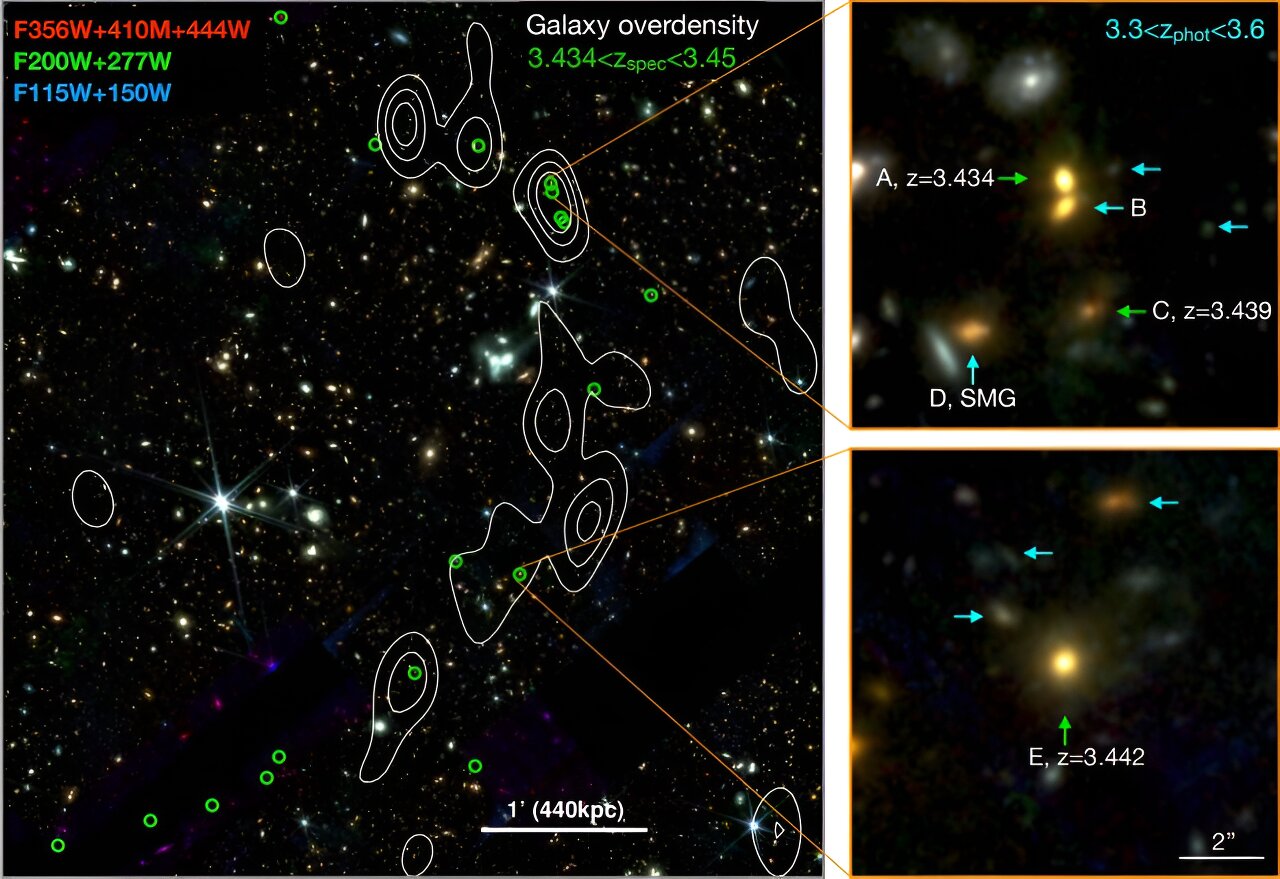Astronomers discovered a giant elongated structure in space, which was called the “Cosmic Vine”. It contains 13 huge galaxies, each of which may become a cluster in the future. Scientists investigated how they formed.

“Cosmic Vine”
On November 8, an international team of astronomers announced that they had discovered a giant cosmic structure stretching for 13 million light-years. It consists of more than 20 huge galaxies.
The study was carried out using the James Webb Telescope. At the same time, it is interesting that the red shift for the “Cosmic Vine” is 3.44. This means that we see it as it was only a few hundred million years after the Big Bang.
With this in mind, the giant, calm galaxies that make up it are of great interest to scientists. It is believed that galactic clusters are formed from them. Therefore, it is possible that we are observing the formation of a supercluster.
What research showed
Observations show that the “Cosmic Vine” is an extremely long and wide structure — approximately 13.04 million light-years long and 0.65 million wide. Thus, this structure is much larger than other compact groups of galaxies and proto clusters that existed at the time when we can observe it. For comparison, the diameter of the modern Milky Way is 100 thousand light-years.
The total weight of the structure reaches 260 billion solar masses. The two most massive galaxies of this structure, named Galaxy A and Galaxy E, are calm (the rate of star formation is below 0.5 solar masses per year) and show bulge-dominated morphologies. The reason for the low rates of star formation in them is that about 500 million years ago, due to the activity of nuclei or fusion, there were flares of star formation in them, as a result of which all free hydrogen “burned out”.
The results of the study confirm that massive calm galaxies can form in growing large-scale structures. The researchers add that it is quite possible that Galaxy E will become the brightest cluster galaxy (BCG) if it enters the core of the cluster later than cosmic time.
Summing up, the authors of the article suggest further investigation of calm clusters of galaxies with high redshift, which may be crucial for improving our understanding of how the largest structures in the Universe are formed and evolve.
According to phys.org
Follow us on Twitter to get the most interesting space news in time
https://twitter.com/ust_magazine
